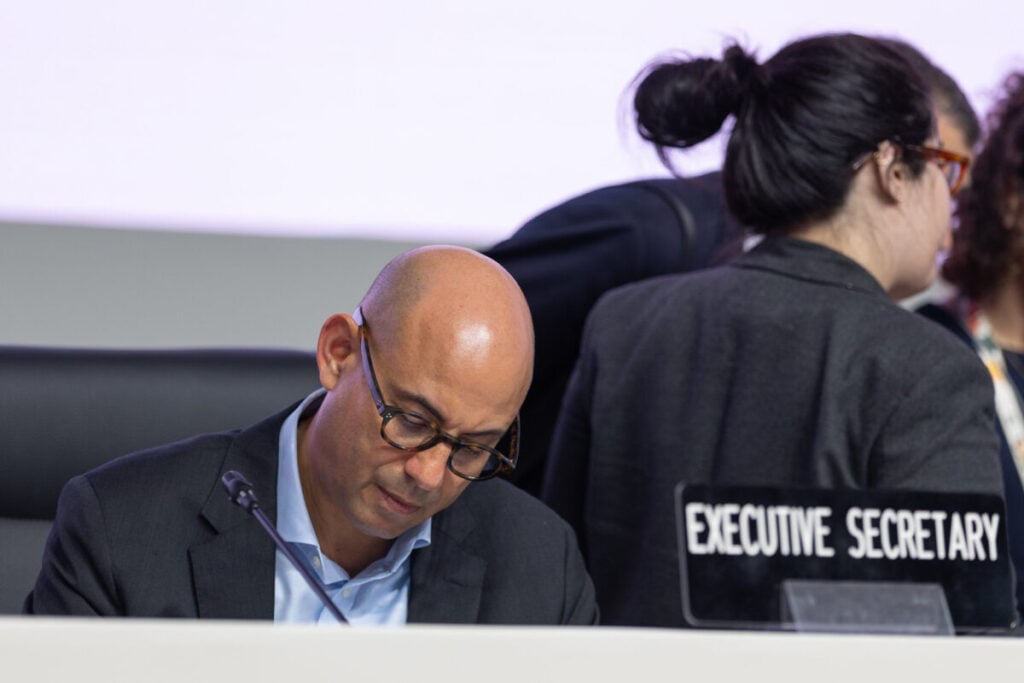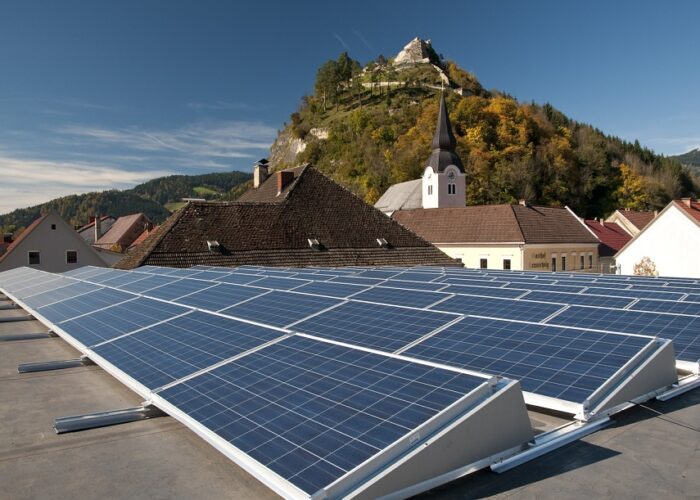
Delegates at this year’s COP30 summit agreed to a “global mutirão”, meaning “collective efforts”, to tackle climate change, but the final text of the summit includes no framework for reducing fossil fuel production.
Following negotiations at the conference in Belém, Brazil, attending countries agreed to a number of commitments, including the Paris Agreement goal of limiting global temperature to “well below two degrees Celsius”, and acknowledged that they need to go “further and faster” to limit the most damaging consequences of climate change.
Try Premium for just $1
- Full premium access for the first month at only $1
- Converts to an annual rate after 30 days unless cancelled
- Cancel anytime during the trial period
Premium Benefits
- Expert industry analysis and interviews
- Digital access to PV Tech Power journal
- Exclusive event discounts
Or get the full Premium subscription right away
Or continue reading this article for free
However, these collective efforts do not extend to a formal roadmap on scaling down fossil fuel production. In total, around 80 countries called for such a roadmap to accelerate the transition away from fossil fuels, including Australia and Brazil, while a similar number of countries were thought to have opposed such a roadmap, including Saudi Arabia and Russia. However, none of the latter countries identified themselves publicly.
This fracturing compromises the “global mutirão” – “collective efforts” – aspect of the summit, and has led to a number of separate agreements, including 24 countries signing the “Belém declaration on the just transition away from fossil fuels” and Colombia and the Netherlands announcing plans to host a conference on transitioning away from fossil fuels in Colombia next April.
This lack of formal progress towards the clean energy transition could be a blow to the global solar PV sector, which has already seen a slowdown in deployment this year. Leading solar markets such as the US and Europe have seen the rate of new solar capacity slow due to a combination of political uncertainty and macroeconomic pressures, and while the COP30 agreement noted that “significant global progress” had been made towards the clean energy transition, the implementation of a formal electricity generation roadmap could have helped tackle some of the uncertainties affecting the global solar sector.
Delivering the ‘Baku to Belém roadmap’
One area in which there is a formal roadmap to accelerate the energy transition, however, is the “Baku to Belém roadmap”, a programme for generating additional financing for the transition. The idea for such a roadmap was first discussed at the COP29 summit in Azerbaijan, and the new roadmap was published ahead of this year’s event, targeting annual investment of “at least US$1.3 trillion” into developing countries, and US$3.2 trillion into the global energy transition, by 2035.
“That roadmap is a powerful signal of confidence—that the US$1.3 trillion annual flow of climate finance needed by 2035 is both achievable as well as essential and offers concrete examples of what can work,” said UN climate change executive secretary Simon Stiell. “Without this finance, climate action won’t happen. It’s only finance at this scale that can equally turn the tide on implementation as well as ensure climate action continues to be the road that makes business sense.”
Attendees agreed that “developer country parties” should take the lead in this regard, and deploy public and “grand-based resources and highly concessional finance” to this end, suggesting that a combination of financing types will be necessary to meet these targets.
Indeed, a report from the London School of Economics (LSE) found that public finance would likely have to make up half of the investment if the world is to meet the US$3.2 trillion by 2035 scenario. Considering achieving just the US$1.3 trillion target for developing countries would require a sevenfold increase in investment between 2022 and 2035, this is a highly ambitious target, and comes at a time where there is considerable uncertainty in many countries’ economic situations.
At this year’s Intersolar Europe event, held in Germany, industry experts said on a panel hosted by Solar Media that creative solutions will be required to secure finance in an increasingly risk-averse landscape. Similarly, in the US, uncertainty over tax credit policy in particular could threaten “tens of billions” of dollars of renewable energy investment, creating challenges for both policymakers and private financiers on both sides of the Atlantic.
The closing of COP30 follows the publication of a report from the International Renewable Energy Agency (IRENA), which found that, despite these uncertainties, the world invested US$554 billion into solar projects in 2024, the most among renewable electricity generation sources. The economic efficiency of solar PV is well-documented, as the levelised cost of electricity (LCOE) for solar projects has fallen consistently over the last decade, potentially creating an economic opportunity for more investment in the solar sector.
Indeed, the final COP30 documentation “acknowledges that significant global progress has been made over the last decade, including rapid advancements in and declining costs of technologies and record levels of global renewable energy capacity and clean energy investments and highlights the economic and social benefits and opportunities of climate action, including economic growth, job creation, improved energy access and security and improved public health.”






